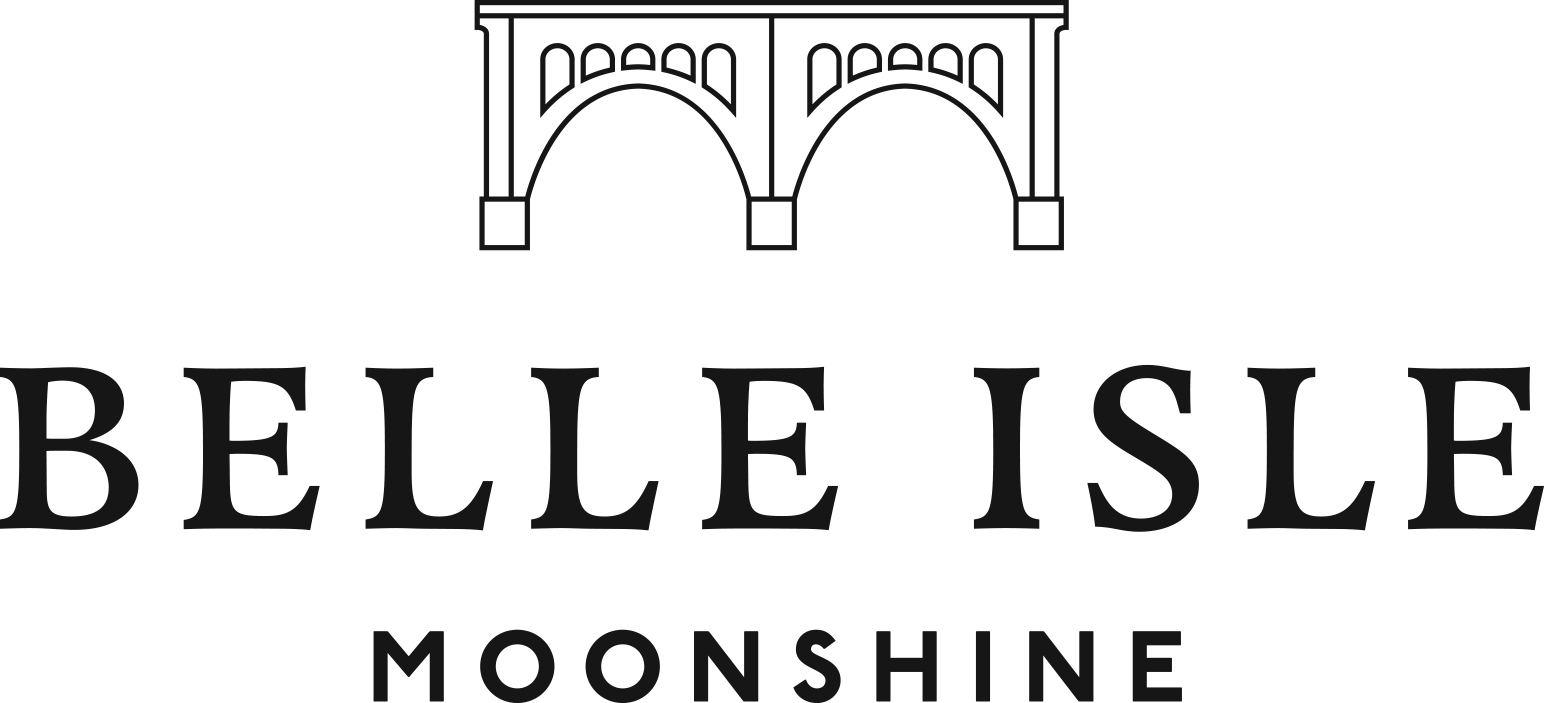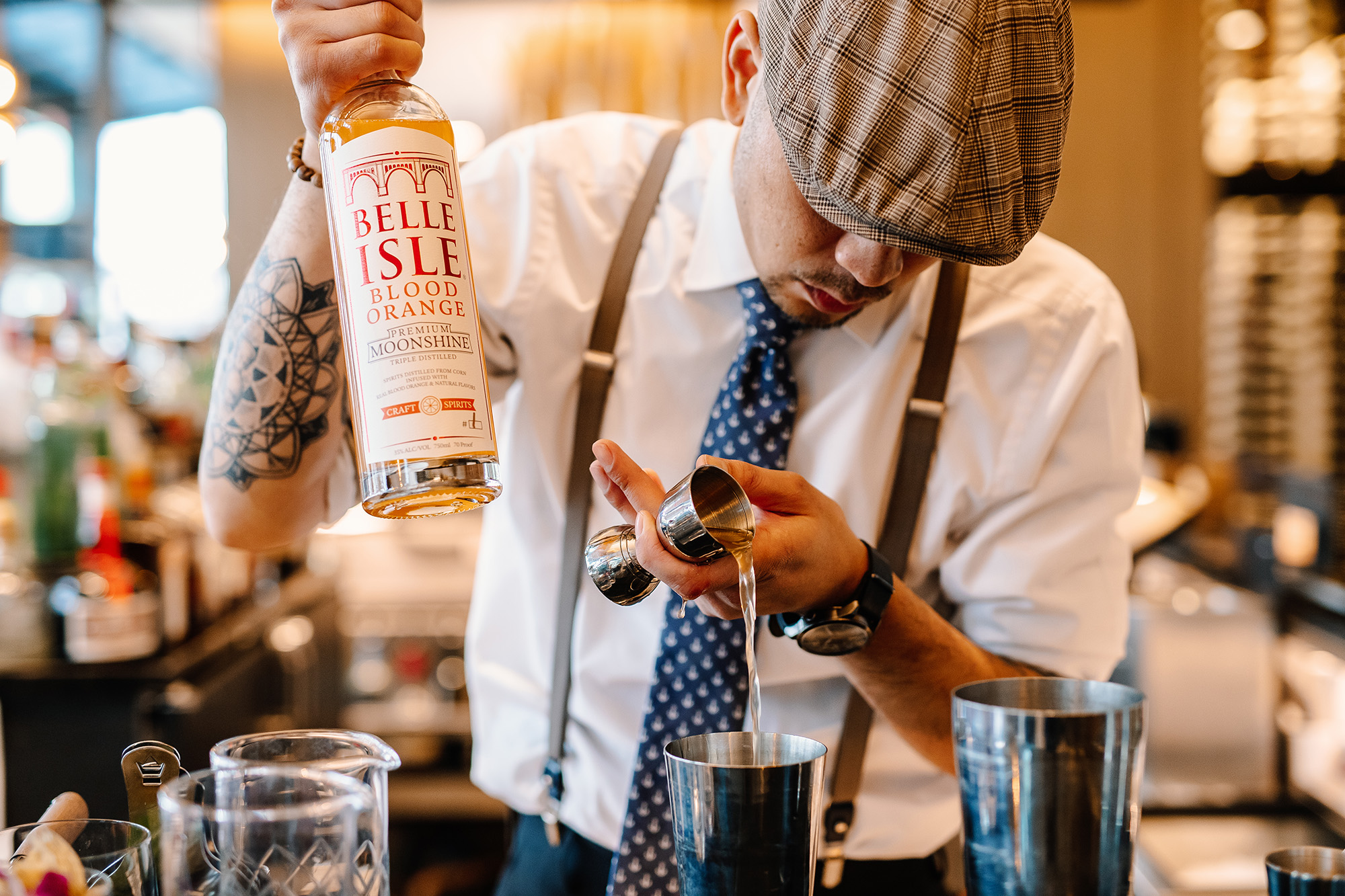All photos by Joey Wharton.
“Where we’re standing right now? It was a little scary,” Kith/Kin Bar Manager Sunny Seng says of 1990’s Washington, D.C., long before the existence of the beautiful marble bar at which we sit. It’s hard to imagine this location as anything other than the modern, stylish D.C. restaurant located in the Intercontinental Hotel, but none of this was here three years ago. In fact, not much on this mile-long waterfront strip was here until 2017 when D.C. debuted its newest revitalization project, The Wharf.
Kith/Kin, opened by Top Chef and Eleven Madison Park alum Kwame Onwuachi, is The Wharf’s hottest new restaurant. Onwuachi’s stellar Afro-Caribbean food has definitely created a buzz in the Capital City, but the cocktail program is what we’re here to talk about today–and, trust us, it doesn’t disappoint. Seng’s innovative, refreshing cocktails are the perfect complement to Onwuachi’s food. We recently chatted with Seng about mixing his first Mai Tai at age eight, his method for finding the perfect cocktail for each bar guest, and his tropical, dreamy Belle Isle cocktail, Calypso’s Moon.
First thing’s first, who are you?
My name is Sunny Seng, and I’m the Bar Manager and Lead Bartender of Kith/Kin, Chef Kwame’s restaurant at The Intercontinental Hotel in Washington, D.C.
How long have you been bartending?
I’m 40, so 32 years. Seriously, the first Mai Tai I ever made was in my father’s restaurant. It was probably against child labor laws, but this was the ‘80s. The service bar was back behind this blockade, and he was teaching me how to make a Mai Tai like, “More rum, boy!” So I literally made my first Mai Tai at eight years old, but I’ve been bartending professionally for 20 years.
So you come by it naturally. What first got you behind the bar, in a more professional sense?
My father was a chef, so I grew up in a kitchen. I grew up around chefs yelling at each other, and I grew up around, “This doesn’t taste right. What’s wrong with it?” I learned how to balance flavors at an early age. I promised myself I would never be a chef, but I learned to cook French food in my father’s restaurant and at home. I kind of took that to another level when I started bartending in college, and I realized the balance of flavors in food are the same as the balance of flavors in a cocktail. It’s sweet, it’s bitter, it’s sour, it’s bold, it’s spicy, it has umami–those are all things I was taught through cooking. I try to utilize those skills and put that into every cocktail I make.
We all just learned that Kin/Kin’s Chef Kwame Onwuachi was nominated as a 2019 James Beard Award Semifinalist for Rising Star Chef. What approach do you take to creating cocktails to compliment his food?
Chef Kwame is amazing. If you make a cocktail he doesn’t like, he will tell you it sucks–and I love that about him. He gives you a chef mentality. Plus, anything in his kitchen we can utilize. We look at our bar program as an extension of the culinary program. We’re like liquid chefs–granted, our “food” is spirits and we feed the soul instead of the belly. We really try to use anything that he’s using back there. Whether it’s sorrel, or gooseberry, or habanero ferment–we really try to use anything he’s using and translate it to our bar guests.
Any pro-tips for someone starting out behind the bar?
First and foremost, observe before you speak. Find a mentor, and listen to that mentor. Learn something new everyday. I still learn something new everyday, even from less-experienced bartenders, and I add that to my repertoire. It’s kind of like adding pieces to a puzzle and transforming as you watch other people’s skills. Just keep adding, and don’t stop adding.
Favorite drink made by someone else?
That’s a hard one. With all the cocktails we make and the thousands of recipes we know how to make, when I go out I usually just drink a shot and a beer. After work, we’re tired of making drinks and just want to get straight to the point.
If I had to choose one cocktail that anybody made me, I would say–and I don’t know the gentleman’s name–but it was at my favorite bar in New York City called Angel’s Share. He smoked the glass, which I had never seen at the time, and the drink is called Smoke Gets In Your Eyes. When I drank it, the smoke got in my eyes. It was delicious, so I was okay with the pain.
Favorite drink that you make?
In all honesty, I don’t really have one. My favorite drink to make almost happens every day, because I profile every guest who comes to the bar as far as their palate goes. So I’ll start off with, “What do you like? What’s your favorite spirit?” I’ll become a “spirit guide,” if you will: do you like vodka? Gin? Rum? Tequila? Whisky? Cognac? Absinthe? Kerosene? Gasoline? We can make a cocktail out of anything. Once we choose that, I kind of figure out if they like sour, sweet, bitter–and usually I don’t even know what’s happening, I’m just gathering information. Then I’ll usually finish with, “If you had to choose one cocktail, what would it be?” I’m not going to make that one, but then I’ll really have an understanding of where their palate is. The coolest part about this is when I create something based on that, their eyes light up when they drink it. That becomes my favorite cocktail every day.
If you had to pick one cocktail ingredient to use for the rest of your life, what would you choose?
Ice! Every cocktail has one ingredient that’s shared, and that’s water through dilution. If you shake too long, it’s overdone. Stir too little? Not diluted enough.
What’s your favorite part about working at your bar?
We get all walks of life from all across the world. Because we’re in a hotel, but have also become a destination restaurant because of Chef Kwame’s food and our cocktail program, we’ll have these people for five or six days. When do you ever have a regular like that? We’ll build relationships with them, then they’ll come back on business or leisure next time and we know their name and what cocktail they like. We know their dog’s name. We really build the kind of relationship that I don’t feel you can do outside of a really busy hotel bar.
Where do you like to stop in for a drink?
After work? The closest bar possible. Normally, I go to a place called The Brighton , which is right down the street. It’s not really a craft cocktail bar, but sometimes that’s not what I’m looking for. We get out so late that we only have about 45 minutes or so to relax and wind down before we go home. Those bartenders have such great personalities. I really believe that you can teach bartending, but you can’t teach personality. Those guys just make me happy. I go over there, and there’s a shot and a beer ready for me, and we’re high-fiving instantly. More so than the taste of a cocktail or the design of a cocktail, if you don’t have the personality, you shouldn’t be behind the bar.
What’s your take on today’s cocktail culture in your city?
I left for Florida and then New York in 1997, and there was nothing out here. Where we’re standing right now? It was a little scary. I was born and raised in Washington, D.C., so I’ve seen every single part of the district change. When I left, there was no scene–no food scene and no place to get a proper cocktail. When I came back to visit much, much later, I was taken out by a friend, and there were all these restaurants in places that you used to never want to go. Now there are food districts, and art districts, and the cocktail scene is on fire here. Everybody’s taking it seriously, and they’re adding artistry to something that I’m very passionate about. I didn’t think that D.C. would ever come around, but we’ve come such a long way.
Give us your golden rule when it comes to bar etiquette.
There are certain things that you do not talk about behind the bar: sexuality, politics, and religion. Those are the three bar no-no’s. You just don’t talk about them, because it can turn a great environment into a very nasty environment quickly.
What’s your favorite way to drink Belle Isle?
I literally stayed up until two in the morning masterminding this cocktail. So, not to toot my own horn, but this cocktail is delicious. Plus it almost took me twice as long to name it, so I’d have to say definitely Calypso’s Moon. Calypso is a type of Afro-Caribbean music, which is a nod to our cuisine, and of course the “moon” is for moonshine. Calypso is also a moon we discovered around Saturn in the 1980’s, so it has a nice astrological tie-in as well.
Ingredients:
+ 2 oz. Belle Isle Blood Orange
+ ¾ oz. Orange Curaçao
+ ½ oz. orgeat
+ ½ oz. fresh lime juice
+ ½ oz. fresh blood orange juice
+ ¾ oz. pineapple juice
+ ½ oz. simple syrup
+ 2 muddled gooseberries
+ 2 mint sprigs
Preparation:
Muddle two fresh gooseberries in a shaker tin. Slap one mint sprig to release oils, then add to shaker. Add remaining ingredients to tin with ice, then shake vigorously. Double-strain into a rocks glass over pebbled ice. Garnish with gooseberry, blood orange wheel, and mint sprig.
Belle Isle Moonshine is a premium, handcrafted spirit proudly hailing from Richmond, Virginia.
We take the name Belle Isle from a small, 540-acre island located smack dab in the middle of the James River where Civil War soldiers used surplus corn rations to make moonshine in copper kettles.
Belle Isle Moonshine is distilled from 100% organic corn, grown by three family farms and responsibly sourced. Once triple-distilled, we charcoal filter Belle Isle four times over. Then, we cut it with purified water right from the James River. Our infusions are made with 100% real ingredients, never artificial flavors or color. We use real grapefruits sourced from Texas and California, local honey from the Shenandoah Valley, organic habaneros grown an hour away, and freshly roasted coffee beans from the most socially conscious roastery in Richmond, Blanchard's Coffee Roasting Co.
From there, each bottle of Belle Isle Moonshine is filled, corked, labeled, and packed by hand by our Production team, who check each bottle and batch for quality assurance. Since Belle Isle is made in small batches, you can find the batch number handwritten in the bottom right corner of each bottle.
Distilled from good times and 100% organic corn.









